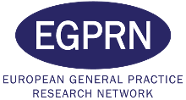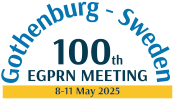Participant selection for lung cancer screening by risk modeling using primary care electronic health records (EHRs): The Catalan scenario.
Mercè Marzo-Castillejo, Albert Brau Tarrida, Lucia Carrasco Ribelles, Mònica Monteagudo Zaragoza, Juan José Mascort Roca, Carolina Guiriguet Capdevila
Keywords: Primary care, electronic health records, lung cancer screening
Background:
Lung cancer (LC) is a major public health problem. Randomised trials of screening with low-dose CT have shown a significant reduction in LC mortality. Optimal selection of high-risk LC populations is essential for LC screening.
Research questions:
Does the PLCOm2012nonrace model identify high-risk LC populations when applied directly to primary care EHRs?
Method:
We calculated the PLCOm2012noRace, full version (FV) and simplified version (SV), 6-year LC risk score (≥2.6%) with the required variables: age, education level, body mass index, COPD, personal history of cancer, family history of LC, current smoking status, smoking intensity, smoking duration and years quit for former smokers. Descriptive statistics were used, considering the normality of the data as appropriate.
Results:
24,294 participants met the inclusion criteria (47.2% female), with a mean age of 65.0 years. Of these, 18.6% had a score ≥2.6. Score alteration was more common among participants aged 60–79 (23.8% vs. 22.5%) and more common in men than in women (22% vs. 15.6%). Using the SV, the proportion of individuals with a high score decreased to 9.9%. Among participants with a high score, the average duration of having a score ≥2.6 was 4.29 years with the FV, and 3.67 years with the SV. Notable differences between the FV and SV were found in the score values, the proportion of individuals with a score ≥2.6, and the duration of elevated scores, varying by sex, age, and time since smoking cessation. The component with the greatest impact on the score - smoking intensity - is the one that had not been updated for the longest time
Conclusions:
In the Catalan healthcare context, primary care EHRs represent a valuable resource for identifying individuals at elevated risk of LC. The full PLCOm2012noRace model enhances the identification of patients eligible for LC screening.
Points for discussion:
Key factors for the successful implementation of lung cancer screening programmes across Europe
Utility and benefits of primary care EHRs to improve lung cancer screening eligibility and decision suport
The role of primary care as a setting for bridging existing gaps in healthcare access, particularly for underserved populations
#122

